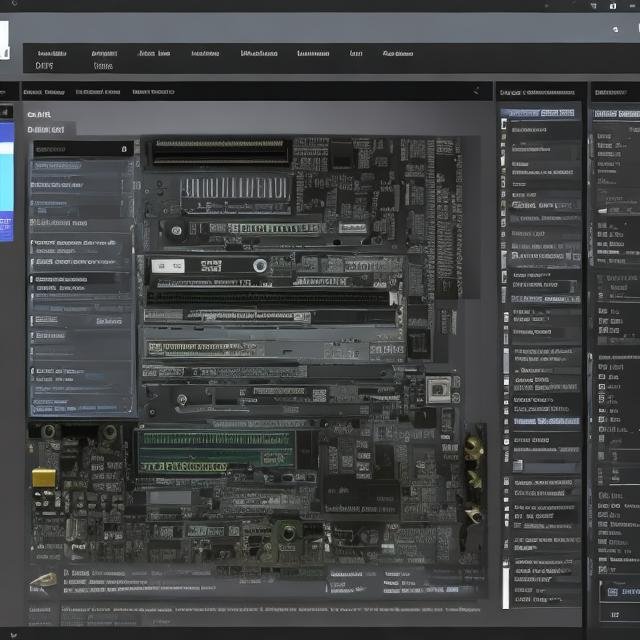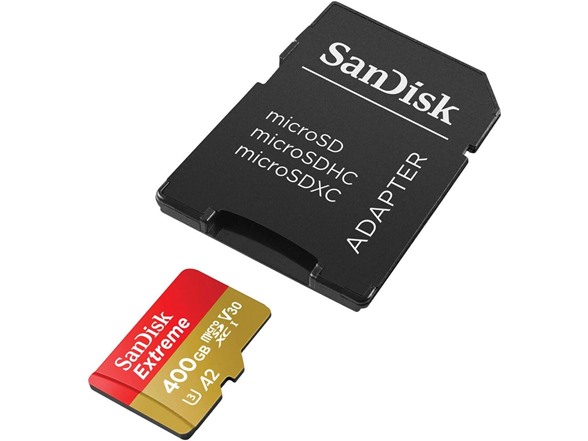A Comprehensive Guide to Building Your Own Linux Distribution

Linux is known for its flexibility and open-source nature, making it a popular choice for developers and enthusiasts to create their own custom Linux distributions. Building your own Linux distribution can be an exciting and educational endeavor, providing you with the opportunity to tailor a system to your specific needs, preferences, or use cases. In this extensive guide, we will take you through the journey of creating your Linux distribution from scratch, providing step-by-step instructions, valuable insights, and the resources you need to get started.
1. Why Build Your Own Linux Distribution?
1.1. Educational Benefits
Building your own Linux distribution is an excellent way to gain an in-depth understanding of the inner workings of the Linux operating system. It allows you to delve into the kernel, system libraries, package management, and more. By creating a Linux distribution from scratch, you will become intimately familiar with the building blocks of the OS.
1.2. Customization and Control
One of the primary motivations for creating a custom Linux distribution is the ability to tailor it to your specific needs or preferences. Whether you require a lightweight system, a specialized server distribution, or a unique desktop environment, you have full control over the components that make up your distribution.
1.3. Niche Use Cases
In some cases, existing Linux distributions may not fully meet your unique requirements. By building your own distribution, you can address niche use cases, such as specialized industrial applications, embedded systems, or educational environments.
2. Understanding the Basics of Linux Distributions
Before diving into the process of building your own Linux distribution, it's crucial to grasp the fundamental components and concepts that make up a Linux distribution.
2.1. Kernel
The kernel is the core of the Linux operating system. It manages hardware resources, controls processes, and provides essential system services. Your choice of kernel version and configuration is a fundamental decision when creating your Linux distribution.
2.2. Package Management
Package management is vital for installing, updating, and removing software on a Linux system. Common package managers include APT (Debian/Ubuntu), RPM (Red Hat/Fedora), and Pacman (Arch Linux). You must decide which package manager to use and how software packages will be organized in your distribution.
2.3. Desktop Environments
Linux offers a wide variety of desktop environments, such as GNOME, KDE, Xfce, and more. The choice of a desktop environment influences the user experience and resource requirements of your distribution.
2.4. Init Systems
The init system is responsible for managing system processes and services. Popular init systems include SysV Init and systemd. Your choice of init system impacts how the system boots, manages services, and handles system events.
2.5. Repositories and Software Sources
Repositories are collections of software packages hosted on servers. Your distribution will need a well-organized repository system to manage software packages, dependencies, and updates.
3. Choosing Your Starting Point
When building a Linux distribution, you have the option to start from scratch or leverage existing projects and tools. Here are some important decisions to make at this stage:
3.1. Source Distributions
Starting from an existing source distribution, such as Debian, Ubuntu, or Arch Linux, can significantly simplify the process. You can modify the distribution to suit your needs while benefiting from an established package manager and repository structure.
3.2. Build Systems
Linux From Scratch (LFS) and Buildroot are examples of build systems that allow you to create a Linux distribution from the ground up. This approach provides complete control but requires a deeper understanding of Linux internals.
3.3. Package Managers
Decide whether to use an existing package manager or create a custom package management solution for your distribution. Your choice depends on your specific requirements and expertise.
4. Setting Up Your Development Environment
To begin creating your Linux distribution, you'll need a well-prepared development environment. This environment includes the necessary hardware, software, and tools to build and test your distribution.
4.1. Hardware Requirements
The hardware you need depends on the scope and target of your distribution. For simple embedded systems, a low-power ARM board may suffice, while more comprehensive distributions may require a powerful x86-64 server.
4.2. Software Requirements
Your development machine should run a Linux distribution that matches the architecture and requirements of your target system. You'll also need various development tools, compilers, and scripting languages to create and package software.
4.3. Version Control
Using a version control system, such as Git, is crucial to manage the source code and configuration files for your distribution. It allows you to track changes, collaborate with others, and revert to previous states when needed.
5. Designing Your Linux Distribution
Creating a Linux distribution involves design decisions that define its purpose, appearance, and user experience.
5.1. Defining Objectives and Use Cases
Before proceeding, clearly define the purpose of your distribution and the use cases it serves. Is it a desktop, server, embedded, or specialized distribution? Having a well-defined goal will guide your decisions throughout the development process.
5.2. Selecting a Desktop Environment
Choose a desktop environment or window manager that aligns with your distribution's purpose and user experience. Factors to consider include resource usage, user interface design, and compatibility with your package management system.
5.3. Package Selection and Management
Determine the set of software packages that will be included in your distribution. Consider user needs, package size, and dependencies. Create a package management policy and guidelines for adding, updating, or removing packages.
5.4. Customizing the Look and Feel
Customize the visual aspects of your distribution, such as themes, icons, wallpapers, and default settings. A consistent and visually appealing design enhances the user experience.
5.5. Creating a Unique Brand Identity
If your distribution is intended for a wider audience, consider creating a unique brand identity, including logos, slogans, and branding materials. This can help establish recognition and trust in your distribution.
6. Creating a Linux Kernel
The Linux kernel is the heart of your distribution. Customizing the kernel allows you to optimize it for your specific hardware and software requirements.
6.1. Kernel Configuration
Use kernel configuration tools, such as make menuconfig or make nconfig, to fine-tune the kernel settings. Adjust options related to hardware support, file systems, and kernel features.
6.2. Compiling the Kernel
Once you've configured the kernel, compile it into a bootable image. This image can then be used during the installation process. Make sure to document the kernel configuration for future reference.
6.3. Kernel Modules
Kernel modules provide support for various hardware components and features. Include the necessary modules in your distribution to ensure compatibility with a wide range of hardware.
7. Package Management
Package management is a critical aspect of your Linux distribution. It allows users to install, update, and remove software effortlessly.
7.1. Selecting a Package Manager
Choose a package manager that aligns with your distribution's goals. For instance, Debian-based distributions often use APT, while RPM-based distributions rely on DNF or Yum.
7.2. Creating Your Repository
Set up a repository structure to organize software packages. Determine the layout of your repository, create metadata files, and ensure that the package manager can fetch and install packages from it.
7.3. Packaging Software
Packaging software involves creating packages that contain application binaries, libraries, configuration files, and metadata. Follow packaging guidelines to maintain consistency and compatibility.
8. Customizing the Init System
The init system is responsible for managing system processes and services. Your choice of init system affects how your distribution boots and operates.
8.1. SysV Init vs. systemd
Decide whether to use a traditional SysV Init or a more modern systemd as your init system. Each has its advantages and trade-offs.
8.2. Writing Init Scripts
Create custom init scripts for your services and processes. These scripts define how services start, stop, and manage dependencies. Thorough testing is essential to ensure smooth system operation.
9. Creating Your Installation Media
For users to install your Linux distribution, you need to provide bootable installation media. This can be a Live CD or USB that allows users to run and install the system.
9.1. Live CD/USB Creation
Utilize tools like mkisofs or dd to create a bootable Live CD/USB image. Ensure it includes necessary installation scripts and a user-friendly interface for installation.
9.2. Custom Installers
Consider creating a custom installer for your distribution. This installer should guide users through the installation process, including partitioning, package selection, and configuration.
10. Testing and Debugging
Before releasing your distribution to the public, extensive testing and debugging are essential to ensure stability and reliability.
10.1. Virtual Machines and Emulators
Use virtualization tools like VirtualBox or QEMU to test your distribution on various architectures and configurations. This allows you to identify and fix issues without the need for physical hardware.
10.2. Hardware Testing
If your distribution targets specific hardware, test it on the actual hardware to ensure compatibility and performance. Document any hardware-specific requirements for users.
10.3. Debugging Tools
Utilize debugging tools, such as gdb, strace, and syslog, to identify and troubleshoot issues. Make use of log files and error reports to address problems promptly.
11. Security Considerations
Security is a critical aspect of any Linux distribution. Implementing robust security measures is essential to protect both the distribution and its users.
11.1. Hardening Your Linux Distribution
Harden your distribution by applying security best practices. This includes configuring firewalls, implementing access control, and regularly patching security vulnerabilities.
11.2. User Privileges and Permissions
Manage user privileges and permissions carefully. Implement the principle of least privilege to minimize the potential impact of security breaches.
11.3. Security Updates
Regularly monitor security updates and patches. Provide a reliable mechanism for users to receive and apply updates to keep their systems secure.
12. Documentation and Support
A well-documented and supported distribution is more likely to gain users and contributors.
12.1. Creating User Guides
Produce user guides and documentation to help users install, configure, and use your distribution. Clear and concise documentation simplifies the user experience.
12.2. Setting Up Support Channels
Establish support channels such as forums, mailing lists, or chat rooms to assist users and gather feedback. A responsive and active support community is a valuable asset.
13. Distribution Maintenance
Maintaining your Linux distribution is an ongoing process that includes software updates, community engagement, and improvements.
13.1. Software Updates
Regularly update the software packages in your repository to provide users with the latest features and security fixes. Implement a reliable update mechanism to keep users' systems current.
13.2. Community Engagement
Engage with your distribution's community to foster growth and collaboration. Encourage contributors to submit packages, patches, and improvements.
13.3. User Feedback and Improvements
Act on user feedback and continually work to improve your distribution based on user needs and preferences. Users' input is a valuable source of information for enhancements.
14. Licensing and Legal Considerations
Ensure your distribution complies with open-source licenses and legal obligations.
14.1. Open Source Licenses
Understand the licenses of the software included in your distribution. Comply with open-source license requirements and maintain a record of licensing information.
14.2. Compliance and Legal Obligations
Be aware of any legal obligations related to distributing software, such as export restrictions and intellectual property rights. Ensure your distribution complies with relevant laws and regulations.
15. Distribution Release and Distribution
After extensive development and testing, it's time to release your Linux distribution and distribute it to users.
15.1. Building the Final Image
Compile the final image of your distribution, including the kernel, packages, and installer. Make this image available for download on your distribution's website.
15.2. Distributing Your Linux Distro
Distribute your Linux distribution through various channels, such as web servers, mirrors, and torrents. Consider partnerships with other distributions or hardware vendors for broader exposure.
16. Conclusion
Building your own Linux distribution is a challenging but rewarding endeavor. It allows you to create a customized, purpose-built operating system tailored to your needs or those of a specific user base. Throughout this comprehensive guide, we've covered the essential steps and considerations, from understanding the basics of Linux distributions to releasing and distributing your creation.
Remember that the Linux community is vast and supportive. Seek guidance, collaborate with other developers, and share your knowledge with the world. Your Linux distribution has the potential to make a significant impact in the open-source ecosystem.
As you embark on this journey, be patient, stay dedicated, and enjoy the process of bringing your Linux distribution to life. With the right resources, tools, and knowledge, you can create a unique and valuable addition to the world of Linux operating systems. Good luck, and happy coding!
What's Your Reaction?

















